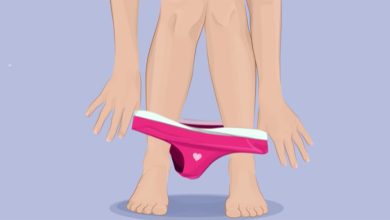This is How to Eat Right for Your Blood Type
In the world of health and fitness, personalized nutrition is a growing trend. While many people understand the basics of metabolism and caloric intake, some are turning to more tailored approaches to optimize well-being. One such approach is the Blood Type Diet, introduced by Dr. Peter D’Adamo, a naturopathic physician and author of the bestselling book Eat Right 4 Your Type.
This diet theory proposes that individuals may respond differently to certain foods based on their blood type. Though it has gained popularity, it’s important to review the concept critically and consult with healthcare professionals before making major dietary changes.
What Is the Blood Type Diet?
The core idea behind the Blood Type Diet is that a person’s blood type—O, A, B, or AB—affects how their body reacts to specific foods. According to Dr. D’Adamo, certain proteins found in foods, called lectins, may interact with blood antigens in ways that influence digestion, metabolism, and even immune response.
While this diet has sparked interest among health enthusiasts, it’s important to note that scientific support for the theory remains limited. Although some individuals report positive experiences, more peer-reviewed research is needed to validate its effectiveness on a broad scale.
Understanding the Four Blood Types
Here’s a general overview of the dietary suggestions made for each blood type according to D’Adamo’s theory:
Type O – “The Hunter”
- Recommended Foods: High-protein items like lean red meats, poultry, and certain vegetables such as spinach, kale, and broccoli.
- To Limit or Avoid: Grains, legumes, dairy, and eggs, which may be harder to digest for this type.
Type A – “The Agrarian”
- Recommended Foods: Plant-based options such as whole grains, fruits (e.g., berries, figs, nectarines), and vegetables. Protein sources include soy and nuts.
- To Limit or Avoid: Most meats, especially red meat and poultry, as well as some dairy and legumes like kidney beans.
Type B – “The Nomad”
- Recommended Foods: A more balanced intake including red meat, dairy, fruits, and vegetables.
- To Limit or Avoid: Chicken, corn, lentils, peanuts, and buckwheat are suggested to be minimized.
Type AB – “The Enigma”
- Recommended Foods: A mix of types A and B, including seafood, tofu, fruits like watermelon and apples, and a variety of vegetables.
- To Limit or Avoid: Red meats, buckwheat, corn, caffeine, and alcohol.
Knowing your blood type can help you explore whether this diet might align with your body’s needs. You can find out your blood type through a doctor, a home test kit, or by donating blood.
Reported Benefits and Considerations
Some followers of the diet report improvements in energy, digestion, and weight management. In one study, certain aspects of the diet were associated with healthier cholesterol levels. However, individual results vary, and these benefits may be influenced by the general emphasis on whole, unprocessed foods rather than blood type-specific guidelines.
Potential Upsides:
- Encourages whole foods and nutrient-dense meals.
- Provides structure and discipline, which can help with weight control.
- Avoids processed foods with minimal nutritional value.
Potential Challenges:
- Restrictive nature may make it hard to follow, especially for those with specific food preferences.
- May require careful planning to avoid nutritional deficiencies, particularly for those limiting dairy, meat, or legumes.
- Lack of strong scientific evidence means results are largely anecdotal.
Should You Try It?
The Blood Type Diet remains a subject of debate within the medical community. If you’re considering it, speak with a registered dietitian or physician to ensure it won’t interfere with your individual health needs. Some people may benefit from increased mindfulness about food choices, while others might find a more conventional balanced diet easier to sustain.
Final Thoughts
Nutrition is highly personal, and what works for one person may not work for another. Whether or not you choose to follow the Blood Type Diet, the key is to focus on whole, nutrient-rich foods, stay active, and consult experts when making significant changes to your diet.
Have you tried the Blood Type Diet? Share your experience in the comments below. What worked—or didn’t work—for you?












